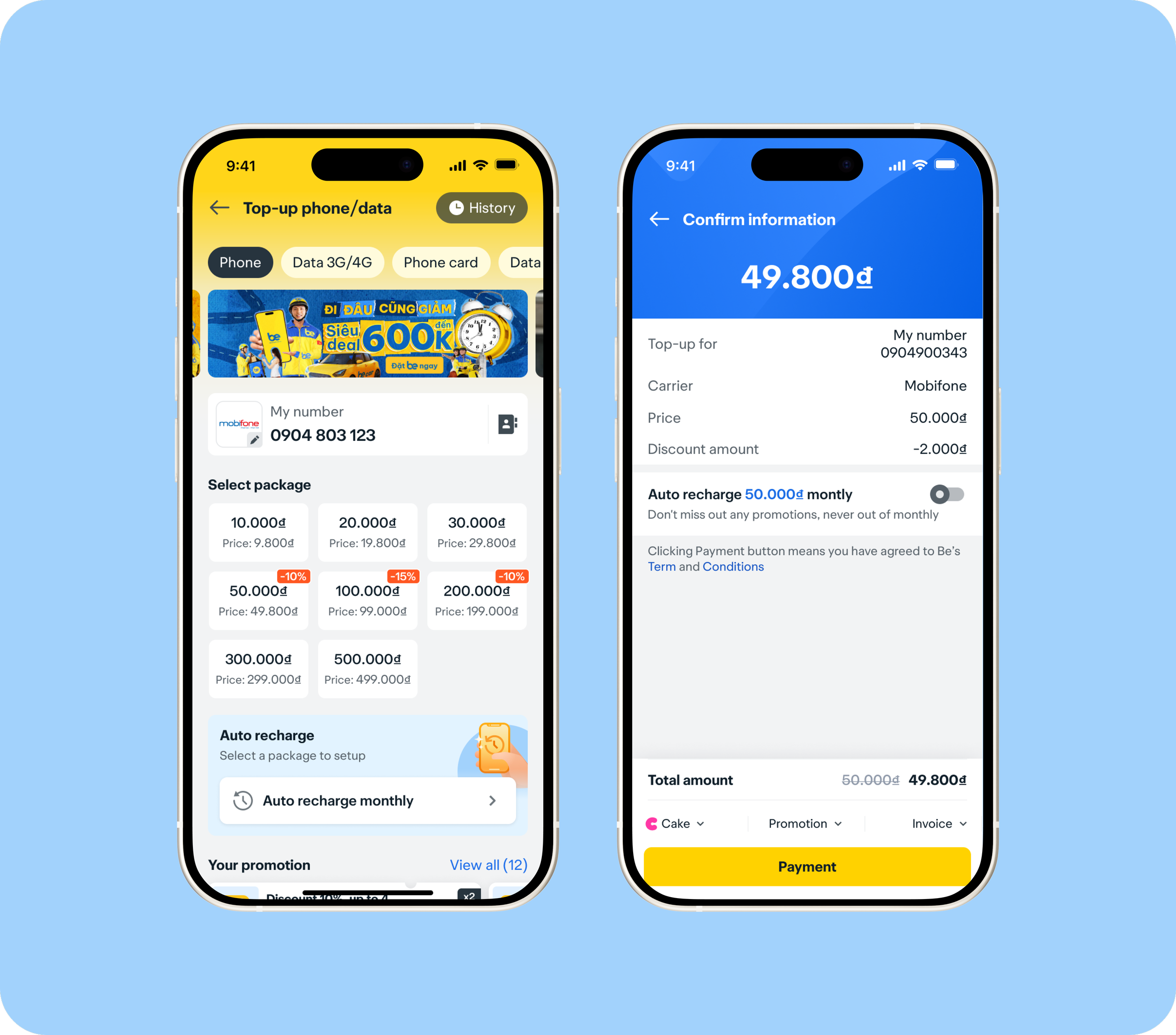RIDE HAILLING - FOOD - EXPRESS - DIGITAL GOOD
Drive Ecosystem Expansion with Product Development Aligned to Be's Goals
Role: Product designer
Duration: September - present
Team: 5 product designers
Company: be Group
Background
Digital goods are contributing more products to Be's ecosystem, furthering its product vision. This has had a positive impact on the Be app.
At Digital Good Tribe, I led the design team to improve the app and create new features. Our goal was to grow the be’s ecosystem and increase revenue in each product, all while keeping our existing users happy.
Project I have been involved
Upon joining the Digital Goods department, I encountered a well-established portfolio of services including Flight ✈️, Bus 🚌, Train 🚇, Insurance 🏥, and Mobile top-up 📲
My initial focus was on user experience optimization. I conducted user research to identify pain points associated with existing features, particularly phone top-ups. Based on these insights, I spearheaded the revamping of relevant features to improve user satisfaction.
Beyond core optimization, I actively participated in product development. This included the creation of a new product for Train, addressing a previously unmet user need. Moreover, I fostered collaboration by contributing to other teams, such as Delivery and the Driver app.
My creative expertise extended beyond user experience. I provided art direction for the gamification feature within the loyalty program. This not only enhanced user engagement but also streamlined task management for team members.
These combined efforts aimed to improve the overall user experience within the Digital Goods department. The project resulted in a more user-friendly and comprehensive suite of services, solidifying our competitive edge within the market.
Me at Be after a One-Week Design Sprint 👩🏼💻
At Be, design sprints are typically one-week affairs, even for larger projects. We break them into phases to manage the workload from kickoff to completion. We plan and allocate tasks early each week, ensuring timelines meet both stakeholder input and the team's existing workload, to hit the sprint deadline. As designers own their project areas, they might also need to support colleagues' projects. For example, I sometimes assist the Food, Delivery, and Loyalty Program tribe
Additionally, during the development phase, I may collaborate with developers and testers to ensure features are ready for launch.
What's the most effective method to address these challenges under a tight deadline?
Supporting Ongoing Tasks and User Needs. We have access to valuable user resources. When tackling problems, I first define the issue based on data collected through conversion rates (CVR), engagement rates, and monthly active users (MAU). Additionally, I gather user feedback to gain a deeper understanding.
Tailored Methodologies for Different Challenges: Recognizing that not every problem has a one-size-fits-all solution, I leverage various methodologies depending on the specific challenge. These methodologies include heuristic evaluation, market research, user interviews, and surveys. My primary focus is to identify the approach that yields the best results with minimal effort.
Balancing Efficiency and Effectiveness: Achieving balance is paramount in my approach. Before selecting a method, I carefully consider project weight, including urgency, scale, and its contribution to overall business objectives. This ensures optimal resource allocation and maximizes the impact of our solutions.
Case studied from selected projects
These case studies dive into the steps I took, the problems I faced, and how I made everything work to achieve these goals.
MOBILE TOP-UP | CASE STUDY
TRAIN | CASE STUDY
Case study is coming soon



